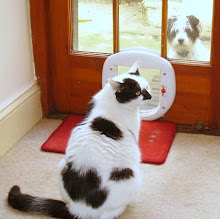This walk is in this month's Cornwall Today with wonderful pictures by Rebecca Taunton. If you are anywhere near a newsagent that has the November edition, it's well worth looking at just for RT's pictures!
A walk along part of the cycle trail, through old mining country
One overcast afternoon, my dog Mollie and I set off with a friend for a circular walk around her childhood stamping ground of Bissoe. We piled into my van and took the A39 from Falmouth to Truro; at the Devoran roundabout at the bottom of the hill we took the turning marked Bissoe. This led under a viaduct, past Bissoe Cycle Hire and we took the first small turning on the right opposite a garage. Several hundred yards later we came to a granite post saying Wheal Andrew and a little further down the road we parked in a large layby on the right.
From here we walked 100 yards on and took a steep rocky lane on the left by a granite sign to Twelveheads. This area is known as Wheal Fortune and the land here was once the most expensive in Cornwall. From 1819 Wheal Fortune formed the easternmost part of the Great Gwennap Consolidated Mines, which was once the largest copper mine in the world. Although it worked for tin at an early period, it was as a copper mine that it became important. But cheaper ores were being mined abroad, and in England the price of copper fell from £115 to £80 a ton. In 1870 Wheal Fortune was abandoned and across Cornwall many miners emigrated to work in Australia and North America. There is little sign of wealth now: only a few scattered houses in amongst granite, bracken and heather; across the fields the only sound was the cry of a solitary cockerel.
We followed this path up the hill, down past Arley Cottage on the right, crossed over a road and continued over, passing clumps of puffball mushrooms, like dun coloured pincushions. Up the hill we walked, past Fernysplatt Bal, disused mine dumps and mine workings. Oak leaves were already turning here, and the blackberries were out in abundance.
At the top of the hill we took a left fork, past White Cottage on the left, and followed this rocky path downhill through thick mud churned up by cycle tracks. We looked over high hedges onto fields of lush tall grass, heard the mew of a young buzzard overhead, and at the end of the footpath we turned right into a small road. A thin watery sunshine came out as we walked through the tiny hamlet of Coombe Hill, where we passed Clifford House on our left and an orchard studded with bright red apples and the last netted raspberries.
Further down the road we realised we were descending into a dense wooded valley where the river rumbled noisily below us, orange gold rosehips peeked from the hedges and a dog barked in the distance.
At the bottom of this road we turned right and first left at a Public Footpath sign, partly obscured by an oak tree laden with green acorns, and entered another small hamlet. Here were stables on our right, and a rusty dustbin perched incongruously on the bank of a fast running stream. Further on we turned left to follow another Public Footpath sign, over a bridge where the stream swelled to a river, then plunged into a whirling eddy. Here the slender trees were throttled with thick veins of ivy, and the path was heavy with mud. Rooks have been known to nest in nearby Cusgarne School but today they cawed above us, black shadows in the sky.
The path suddenly opened out into a tarmac area and we passed Calico Cottage before arriving at Hicks Mill Methodist Church, built in 1821, though the deeds go back to 1667 and there was once a corn mill on this site.
We peered through the windows of this well maintained building before walking through the car park out onto a road and turned immediately left, along a quiet road past Mount Pleasant Farm on the right. This led to another crossroads where we turned left. Over the granite bridge we turned left onto the official cycle trail from Devoran to Portreath; this is a smoother track, popular with cyclists of all ages and sizes. As we walked, two cyclists in red and yellow jerseys sped past, ringing their bells loudly.
We walked over another wooden bridge, and noticed red water flowing in the stream below: this was from heavy metals that leaked into the water when Wheal Jane mine flooded in 1991, leaching toxic mine waste that travelled as far as Restronguet Creek.
The ground opened up here into flat moorland with gorse, purple heather and blackberries in abundance – a natural buffet for myself and Mollie. Up on our right, disembodied voices floated down from the cement works that looked like an eerie James Bond set. Mount Wellington looked down from the left, and all around us was Bissoe Valley Nature Reserve owned by the Wildlife Trust. A restoration programme set up in 1986 has ensured that there is newly planted woodland, ponds and regenerating heathland in this area and we saw evidence of this: a pond with huge lemon coloured waterlillies in amongst the reeds, dragonflies and emerald damsel flies.
Further on we came to what looked like a solitary mine engine but is in fact what was left of the Point Mills Arsenic Refinery, that produced arsenic famous for its high quality throughout Europe. A plaque told us that the refinery operated for 100 years ending with the outbreak of World War Two.
Nearing the road we passed a field full of large rabbits which Mollie tried to chase, and a pony which she thankfully didn’t. We headed towards the road, turned left and immediately right to Bissoe Cycle Hire where we sat outside the café and enjoyed mugs of tea and slices of fruit cake, though their cream teas and flapjacks looked very tempting. Despite the proximity to the arsenic works!
Leaving the cycle hire behind, we headed onto a narrow and muddy path where the sun broke through the clouds and a flock of crows chattered above, followed by a solitary egret. Further on we saw a dragonfly, its turquoise wings glittering in the faint light, proof that the conservation efforts are working here.
Soon we forked right and met up with another bridlepath. This was smoother which made walking easier and a little further on we hit the official cycle trail. To our right towered a mine waste dump which my friend said she had played on as a child. Not something that would be allowed in these health and safety conscious days!
We finally arrived back at Wheal Andrew, turned right and walked along the road to the layby where we’d left the van. Mollie was covered in mud, but she gave a happy sigh and flopped into her basket, eyeing the bag of blackberries hopefully as we drove home.
This walk gives a real insight into one of the mining areas of Cornwall, undisturbed and ancient, where the air is heavy with history.
FACTBOX
Length: 3 1/4 miles
Time: 1 ½ - 2 hours
Grade: moderate but can be muddy in places so boots are advised
Maps: OS Explorer 104 Redruth & St Agnes
Refreshments: Available at Bissoe Tramways Cycle Hire.
Over 100 Bikes Open all year. Old Conns Works, Bissoe Truro, TR4 8QZ
Tel:- 01872 870341
Areas of historical/other interest: The old Mineral Tramways from Devoran to Portreath is an interesting ride for the average cyclist - the route follows what were working rail tracks that carried minerals (tin, copper etc) to the ancient quays at Devoran or the harbour at Portreath.
Mount Wellington Mine was once part of Wheal Jane and one of the last 3 working mines in Cornwall during the 1980s.
















